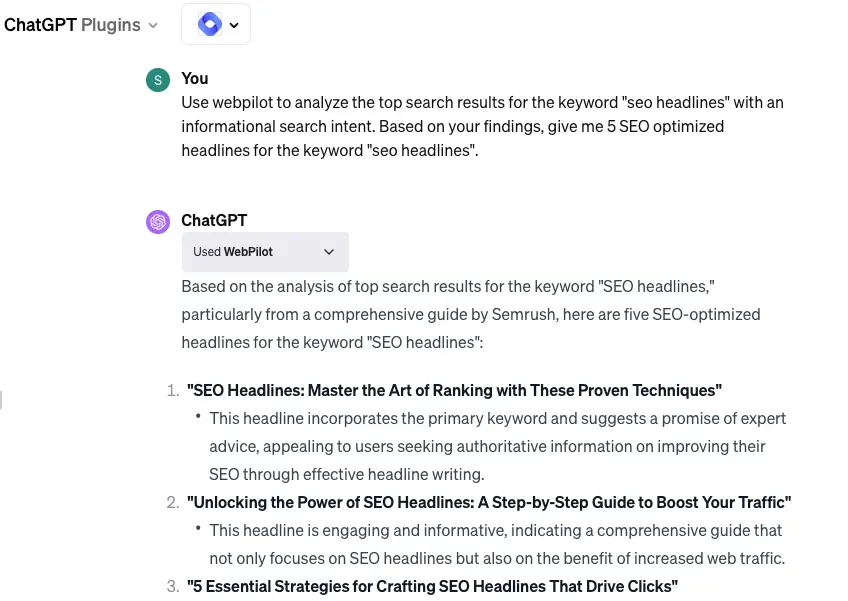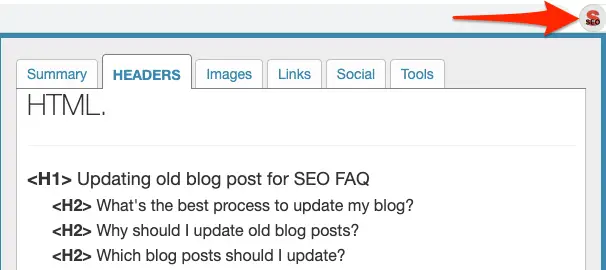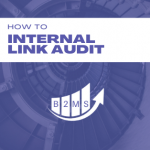The Secret to High-Ranking SEO Headlines: Tips and Tricks for 2024
Crafting Compelling SEO Headlines for Blogs and Websites
In the digital world, a headline does much more than pique a reader’s curiosity; it serves as a critical gateway to your online presence. The right headline can catapult your article to the top of search engine results, making it a cornerstone of effective Search Engine Optimization (SEO). But what makes an SEO headline not just good, but great in the eyes of both readers and search engines? Before drawing in readers, a well-optimized headline significantly boosts your content’s position in search engine rankings, as well as click-through rates.
In this guide, we delve into the art and science of SEO headline creation. We’ll start by laying down the foundational SEO guidelines that govern headline effectiveness. From understanding the nuances of keyword placement to aligning with user search intent, we’ll explore the strategies that transform a simple title into a powerful tool for online visibility and engagement.
Understanding SEO Headlines: Definitions and Key Differences
Headings in source code: role & structure of SEO headings
SEO headlines are more than just eye-catching phrases; they are strategic elements crafted to enhance your content’s visibility in search engine results.
In the realm of HTML coding, these headlines are encapsulated within H-tags (H for Headline), ranging from H1 to H6, with H1 being the most significant. These tags help search engines understand the structure and hierarchy of your content, influencing how it’s indexed and displayed in search results.
An HTML tag is represented in the code as follows:

Moreover, the space is limited. H1 headings must not exceed 70 characters including spaces. This forces the writer to be concise and prevents keyword stuffing.
SEO Headline vs Title Tag
There is a difference between the headline and the SEO title. A common mistake in online marketing is that the headline gets the main focus, as it is assumed that this will be seen by the user and then generate the click.
While this is true for website visitors who are already on the site or blog feed, it is not true for Google search results. On the search results page (SERP), the blue clickable link is the SEO title, not the H1 headline.

The title is then also displayed in the browser tab.

As you can see, the SEO title in the browser window is identical to the title in the search results, and the SEO heading is slightly different.
The interplay between headlines and search performance
The synergy between your H1 headline and title tag is a dance of relevance and appeal. A well-crafted headline ensures that once visitors land on your page, they find what they were promised in the title tag, reducing bounce rates and potentially improving your site’s search ranking over time.
Some rules for SEO title tags concerning H1 tags:
- The title tag should have the optimal character count between 45 and 60 chars (therefore, shorter than the headline)
- The H1 and the title tag must not be identical
- Both should contain the primary keyword and reflect the search intent
Knowing Your Audience: Crafting SEO Headlines That Resonate
Audience research for tailored headlines
Effective headlines start with understanding your audience. Utilize tools like Google Analytics and keyword research platforms to gain insights into your audience’s demographics, interests, and online behavior. This research is crucial for crafting headlines that speak directly to your readers’ needs and preferences.
Aligning headings with audience preferences and search intent
Tailor your headlines to resonate with what your buyer persona is reading. Use language and references that align with their interests and address their specific needs or pain points. Additionally, consider the search intent behind their queries:
- Informational Queries: Use “How to,” “Guide to,” or “Tips for.”
- Commercial Intent: Research intent before making a transaction. Use words like “Best” “Best X for Y”, “Review”, or “Comparison”
- Transactional Queries: Include action-oriented phrases like “Buy now” or “Free trial.”
- Navigational Intent: Use brand or product names. Users know already where they want to go.
Concise and Engaging Headlines
Remember, the goal is to create headlines that are not only attention-grabbing but also reflective of what your audience is searching for. A well-crafted headline should bridge the gap between your content and the audience’s expectations, leading to better engagement and satisfaction.
Keyword Research and Optimization: Mastering SEO Headlines
Effective Keyword Research for Headlines
The power of a headline in SEO largely hinges on the strategic use of keywords. Conducting thorough keyword research is the first step in this process. Utilize tools like Google Keyword Planner or SEMrush to identify keywords that are not only relevant to your content but also have a high search volume and moderate competition. This research helps in pinpointing what your target audience is searching for and how they phrase their queries.
Balancing Primary and Long-Tail Keywords
Incorporating both primary and long-tail keywords in your headlines is crucial for a well-rounded SEO strategy. Primary keywords are often more competitive but essential for relevance, while long-tail keywords are more specific and less competitive, offering a higher chance of ranking for niche queries. For instance, a primary keyword might be “healthy recipes,” while a long-tail keyword could be “easy healthy recipes for dinner.”
Strategic Placement of Keywords in Headlines
The placement of keywords within your headlines significantly impacts their effectiveness. Headlines, especially those marked with H1 tags in HTML, are given more weight by search engines than regular text. Therefore, ensure your primary keyword is prominently placed in your main headline. For subheadings (H2, H3, etc.), incorporate long-tail keywords to address specific aspects of your content. This not only aids in SEO but also helps in structuring your content logically, making it more user-friendly.
Incorporating NLP in SEO Headlines and FAQ Sections
With the evolution of search engine algorithms incorporating Natural Language Processing (NLP), understanding and leveraging NLP in your SEO strategy has become increasingly important. NLP enables search engines to understand and interpret human language more effectively, which means they can better discern the context and intent behind search queries. This works especially well for FAQs to rank in the People Also Ask section of the SERPs.
The best NLP FAQ structure:
Format the question as a subheading (H2 or H3) and then repeat the question as a statement while also answering. Don’t use “yes” or “no” to answer a question.
Example:
What is the mix between red and yellow?
When you mix the colors red and yellow, you will get orange.
Conclusion: Crafting Keyword-Rich Headlines
Remember, the goal is to integrate keywords naturally into your headlines. They should read smoothly, make sense to the reader, and accurately reflect the content that follows. By strategically using keywords, you can significantly enhance the visibility and effectiveness of your headlines in search engine rankings.
Create SEO headlines with the help of AI
With the rise of AI, you can leverage tools like ChatGPT to help you craft your ideal headline. If you use ChatGPT Plus you can even use the WebPilot plugin to look at the top search results and craft perfectly optimized H1 SEO headings for your article.

10 SEO headline ideas and tips for more engagement
1. Power Words and Emotional Triggers
Incorporate powerful words and emotional triggers to make your headlines more compelling. Words like ‘transform,’ ‘discover,’ ‘unleash,’ and ‘overcome’ can evoke strong emotional responses and drive reader engagement.
2. Clarity and Simplicity
Ensure your headlines are clear and straightforward. Avoid jargon and complex language. A simple, direct headline often has a stronger impact and is more accessible to a broader audience.
3. Incorporating Numbers and Statistics
Using numbers and statistics in headlines, such as “10 Proven Strategies” or “5 Secrets Revealed,” can make them more specific and enticing. Listicles and how-to guides with clear numerical targets can attract readers looking for structured and quantifiable information.
4. Avoiding Clickbait and Setting the Right Expectations
While it’s important to create curiosity, avoid clickbait headlines that overpromise or mislead. Ensure your headline accurately reflects the content of the article. This builds trust with your audience and reduces bounce rates.
5. Question vs. Statement
Differentiate between your SEO title and H1 headline by using a question for one and a statement for the other. For example, SEO Title: “What Causes Climate Change?” and H1: “The Science Behind Climate Change.”
6. Active Language and Strong Verbs
Use active language and strong verbs to create a sense of action and urgency. Phrases like “Boost Your Skills” or “Drive Innovation” can be more engaging than their passive counterparts.
7. Causal Correlations and Unexpected Twists
Headlines that suggest cause-and-effect or present an unexpected twist can be intriguing. For example, “How Meditation Can Boost Work Productivity” combines an unexpected cause with a desirable effect.
8. Showcasing Results
Headlines that reveal impressive results, like “How I Gained 10,000 Followers in a Month,” can pique interest by promising insights into successful strategies or experiences.
9. Drawing Inspiration from Others
Look at successful publishers in your niche for inspiration. Analyze their headline styles and see how they align with audience preferences and current trends.
10. A/B Test your headlines
SEO headlines aren’t a set-and-forget. You should keep track of your headlines and test what’s resonating most with your readers. Come back regularly and iterate.
11. Crafting the Complete Package
Remember, a headline doesn’t work in isolation. It should be part of a well-crafted package, including the SEO title, meta description, and the content itself. Each element should complement the others to create a cohesive and compelling narrative.
On-Site SEO Headings Guidelines
Technical SEO is also called on-site or on-page SEO. Google and other search engines create guidelines that make it easier for their crawlers to understand the page or article, and thus present it in relevant search queries in the organic results.
For SEO headings, the following on-site SEO guidelines apply:
SEO headings should…
- be between 20 and 70 characters long
- contain more than one word
- not be identical to the SEO title
- be unique and only appear once per page
- not be duplicated (e.g. duplicate H3 headlines with “Schedule a demo”)
- not skip any level (go from H2 to H4 without having an H3 on the page)
SEO tools to analyze headlines and site structures
- Chrome extension: SEO Meta in 1-Click can show the heading hierarchy with the H1 and all H2 to H6 subheadings at a glance.

- Source code inspection: It’s an alternative method to the above Chrome extension.
- SEO plugins: For WordPress users SEO plugins such as Yoast SEO or Rank Math can be extremely helpful. They provide real-time feedback on your SEO headlines
- Headline analyzers: Online tools can analyze your headlines and give you feedback.
Practical Examples and Case Studies: Learning from Successful SEO Headlines
Showcasing Successful SEO Headlines
To understand the power of effective SEO headlines, let’s look at some real-world examples. For instance, a headline like “5 Proven Strategies to Increase Your Website Traffic” is both informative and engaging. It promises value (proven strategies) and is specific (five strategies).
Analyzing the Impact of Different Headline Styles
Different headline styles can have varying impacts on engagement and SEO performance. For example, headlines with numbers often perform well as they set clear expectations for the reader. Emotional headlines, like “Transform Your Life in 30 Days,” can resonate more on a personal level, leading to increased engagement.

Sascha is a Lifecycle Marketing Consultant with over 8 years of digital marketing experiences in Silicon Valley, the UK, and Germany.
After leading the demand generation for a 100+ million company, he decided to venture out on himself. He’s now helping clients to attract and convert more leads and customers.
His main focus are SEO, paid media & marketing automation – all with the focus to tie marketing campaigns to revenue.
Sascha has been featured in industry publications.




